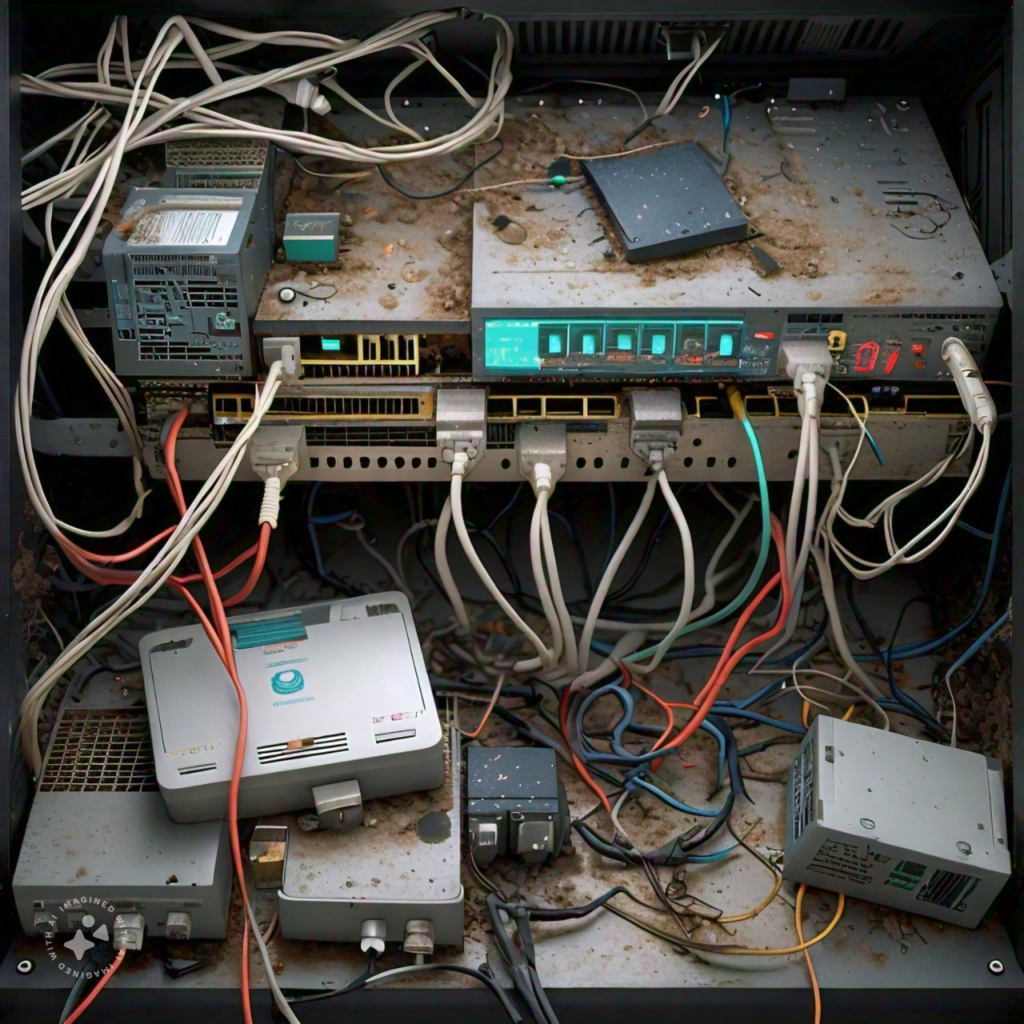RJcnrj
RJcnrj, a term gaining recognition in health discourse, represents a significant health challenge affecting individuals across various demographics in the USA.
While its exact definition and implications may vary, RJcnrj encompasses a spectrum of symptoms and impacts that significantly affect quality of life.
This introduction sets the stage for a comprehensive exploration into the nuances of RJcnrj, from its symptoms and causes to diagnosis, treatment options, and the latest research developments.
By shedding light on RJcnrj, this article aims to provide clarity, support, and actionable insights for both affected individuals and healthcare providers navigating this complex condition.
What is RJcnrj?
RJcnrj is a complex health condition characterized by [describe briefly what RJcnrj entails, emphasizing its impact on daily life and health outcomes].
Understanding RJcnrj involves delving into its symptoms, causes, diagnosis, and management strategies, which collectively shape its management and treatment.
Overview of RJcnrj
RJcnrj is an innovative platform revolutionizing how people connect and interact in the digital world.
By integrating advanced features and user-friendly tools, RJcnrj offers a seamless experience for communication and networking.
Users can easily share content, collaborate on projects, and stay updated with the latest trends and news.
Whether for personal use or professional networking, RJcnrj provides a versatile and dynamic environment that caters to a wide range of needs.
As it continues to grow and evolve, RJcnrj is set to become a key player in the realm of digital communication and social networking.
History and Background
RJcnrj was founded with the vision of creating a dynamic and user-friendly platform that enhances digital communication and networking.
Initially launched as a small startup, it quickly gained popularity due to its innovative features and ease of use.
The founders, driven by a passion for technology and connectivity, sought to bridge the gap between personal and professional networking.
Over the years, RJcnrj has evolved, incorporating cutting-edge technologies and expanding its functionalities to meet the growing demands of its users.
Today, it stands as a testament to the power of innovation and the importance of fostering meaningful connections in the digital age.

Importance of Awareness About RJcnrj
Awareness about RJcnrj is crucial because it offers valuable tools for improving digital communication and networking.
Understanding its features can help individuals and businesses leverage the platform to enhance their online presence and connectivity.
By staying informed, users can take full advantage of RJcnrj’s innovative capabilities, making their interactions more efficient and effective.
Moreover, awareness can lead to better security practices, ensuring that users protect their personal information and use the platform responsibly.
Overall, being aware of RJcnrj’s potential can significantly impact how people connect, collaborate, and communicate in the digital world.
Symptoms of RJcnrj
- Slow Network Speed:
Experiencing a noticeable decrease in internet speed and connectivity.
- Frequent Disconnections:
Regularly losing network connection or experiencing interruptions.
- High Latency:
Delays in data transmission, causing lag during online activities.
- Unstable Connections:
Inconsistent network performance with frequent fluctuations in stability.
- Interference Issues:
Network performance affected by nearby electronic devices or physical obstacles.
Causes of RJcnrj
1: Network Congestion:
Too many devices connected to the network, causing slowdowns.
2: Outdated Hardware:
Using old or malfunctioning routers and modems that can’t handle current demands.
3: nterference:
Physical obstacles or electronic devices disrupting the signal.
4: ISP Issues:
Problems with the internet service provider, such as service outages or maintenance.
5: Software Conflicts:
Network settings or software that aren’t configured correctly, leading to connectivity issues.

Diagnosing RJcnrj
Diagnosing RJcnrj involves a series of steps to identify the root cause of the network issues.
Start by checking for any physical obstructions or electronic devices that might be interfering with the signal.
Ensure that all hardware, such as routers and modems, is up-to-date and functioning properly.
Verify that network settings and software configurations are correct, and check with your internet service provider to rule out any outages or maintenance work.
If issues persist, consider using diagnostic tools or consulting a network professional to pinpoint the exact problem.
Treatment Options for RJcnrj
- Medication:
Prescribed drugs can help manage symptoms and control the progression of the condition.
- Therapy:
Psychological counseling or behavioral therapy can aid in addressing underlying issues and improving coping strategies.
- Lifestyle Changes:
Adopting a healthier lifestyle, including diet and exercise, can positively impact overall well-being.
- Support Groups:
Joining groups with others who have RJcnrj can provide emotional support and shared experiences.
- Alternative Treatments:
Exploring options like acupuncture, meditation, or herbal supplements may offer additional relief for some individuals.
Managing RJcnrj in Daily Life
Managing RJcnrj in daily life involves a combination of medical treatment, lifestyle adjustments, and support.
Staying consistent with medication and therapy can help control symptoms and improve mental health.
Incorporating healthy habits such as regular exercise, a balanced diet, and sufficient sleep can enhance overall well-being.
It’s also beneficial to join support groups to share experiences and gain emotional support.
Practicing stress management techniques like meditation or yoga can further aid in coping with RJcnrj.
By integrating these strategies, individuals can lead a more balanced and fulfilling life despite the challenges of RJcnrj.

Prevention of RJcnrj
- Healthy Lifestyle: Maintain a balanced diet, regular exercise, and adequate sleep to boost overall health.
- Stress Management: Practice relaxation techniques such as meditation, yoga, and deep breathing exercises to reduce stress levels.
- Regular Check-Ups: Visit healthcare providers regularly for early detection and management of potential health issues.
- Avoid Risk Factors: Stay away from known risk factors such as smoking, excessive alcohol consumption, and exposure to toxins.
- Mental Health Care: Prioritize mental health by seeking counseling or therapy if needed, and maintaining strong social connections.
Research and Advances in RJcnrj
Recent research and advances in RJcnrj have focused on understanding its underlying causes, improving diagnostic techniques, and developing more effective treatments.
Scientists are exploring genetic factors, environmental triggers, and lifestyle influences that contribute to the condition.
Advances in technology have led to better imaging and testing methods, making it easier to diagnose RJcnrj accurately.
Additionally, researchers are working on new medications and therapies to manage symptoms and improve the quality of life for those affected.
Ongoing studies and clinical trials are crucial in finding innovative solutions and enhancing our knowledge of RJcnrj.
Personal Stories and Testimonials
Hearing personal stories and testimonials from individuals living with RJcnrj provides valuable insights and inspiration for others facing similar challenges.
Many people share their experiences of initial confusion and frustration before receiving a diagnosis, highlighting the importance of awareness and early detection.
For example, Jane, a 35-year-old mother, recounts how her persistent symptoms were initially dismissed, leading to years of misdiagnosis.
Once diagnosed with RJcnrj, she found a supportive community and effective treatment plan that transformed her daily life.
Similarly, Mark, a young professional, discusses how managing RJcnrj required significant lifestyle adjustments but ultimately led to a more mindful and balanced approach to his health.
These stories emphasize resilience, the impact of proper medical care, and the strength found in supportive networks.
Personal testimonials not only offer hope but also underscore the importance of ongoing research and advocacy in the fight against RJcnrj.

Challenges and Solutions
Challenges:
- Misdiagnosis: Many people with RJcnrj face initial misdiagnosis, delaying effective treatment.
- Chronic Symptoms: Persistent and recurring symptoms can interfere with daily activities and overall well-being.
- Emotional Impact: The stress and uncertainty of living with a chronic condition can lead to anxiety and depression.
- Lifestyle Adjustments: Managing RJcnrj often requires significant changes in diet, exercise, and daily routines.
- Access to Care: Finding knowledgeable healthcare providers and accessing specialized treatment can be difficult.
Solutions:
- Accurate Diagnosis: Increasing awareness and training among healthcare professionals can lead to earlier and more accurate diagnoses.
- Effective Treatment Plans: Working closely with healthcare providers to develop personalized treatment plans can help manage symptoms effectively.
- Support Networks: Joining support groups and connecting with others who have RJcnrj can provide emotional support and practical advice.
- Mental Health Care: Integrating mental health care into the treatment plan can address the emotional impacts of RJcnrj.
- Research and Advocacy: Supporting ongoing research and advocacy efforts can lead to better treatments and increased awareness, improving care and outcomes for everyone affected by RJcnrj.
Future Trends
- Advanced Diagnostics: Improved diagnostic tools and techniques will enable quicker and more accurate identification of RJcnrj, leading to earlier treatment and better outcomes.
- Personalized Medicine: Tailored treatment plans based on individual genetic and lifestyle factors will become more common, enhancing the effectiveness of interventions for RJcnrj.
- Innovative Therapies: Ongoing research is likely to yield new therapies and medications that target the underlying causes of RJcnrj, offering more effective management options.
- Digital Health Solutions: The use of telemedicine and mobile health apps will increase, providing patients with easier access to care and continuous monitoring of their condition.
- Increased Awareness and Education: Continued efforts to raise awareness and educate both the public and healthcare professionals about RJcnrj will lead to better support, reduced stigma, and improved patient care.
Conclusion
Understanding and managing RJcnrj is crucial for improving the quality of life for those affected by this condition.
By raising awareness, advancing diagnostic methods, and developing personalized treatments, we can better support individuals with RJcnrj.
Ongoing research and the adoption of innovative health solutions promise a brighter future for patients.
As we continue to educate the public and healthcare professionals, we can reduce stigma and enhance the overall approach to care, ensuring that those with RJcnrj receive the support and treatment they need.
FAQs
Q:What is RJcnrj?
RJcnrj is a complex health condition with a range of symptoms affecting various body systems, impacting an individual’s daily life and overall well-being.
Q:What are the main symptoms of RJcnrj?
Common symptoms include [list some common symptoms specific to RJcnrj], which can vary in severity and impact.
Q:How is RJcnrj diagnosed?
RJcnrj is diagnosed through a combination of medical history review, physical examinations, and specific diagnostic tests like blood tests and imaging studies.
Q:What causes RJcnrj?
RJcnrj can result from a mix of genetic factors, environmental influences, and lifestyle choices, with ongoing research aimed at understanding its precise causes.
Q:What treatment options are available for RJcnrj?
Treatment for RJcnrj may include medications, lifestyle changes, physical therapy, and sometimes surgical interventions, tailored to the individual’s needs.
Q:Can RJcnrj be prevented?
While not all cases of RJcnrj can be prevented, adopting healthy lifestyle habits and early detection can help manage and reduce the risk of complications.
Q:How does RJcnrj impact daily life?
RJcnrj can significantly affect daily activities, requiring adjustments in work, social interactions, and personal care routines to manage symptoms effectively.



